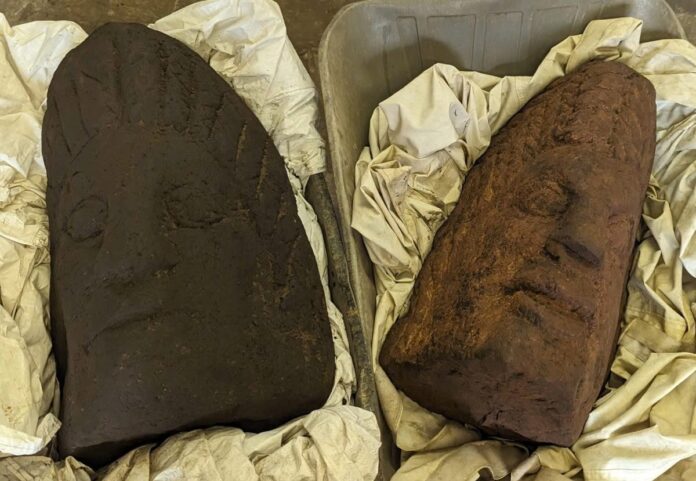Unearthing History: Monumental Roman Sculptures Found in Northern England
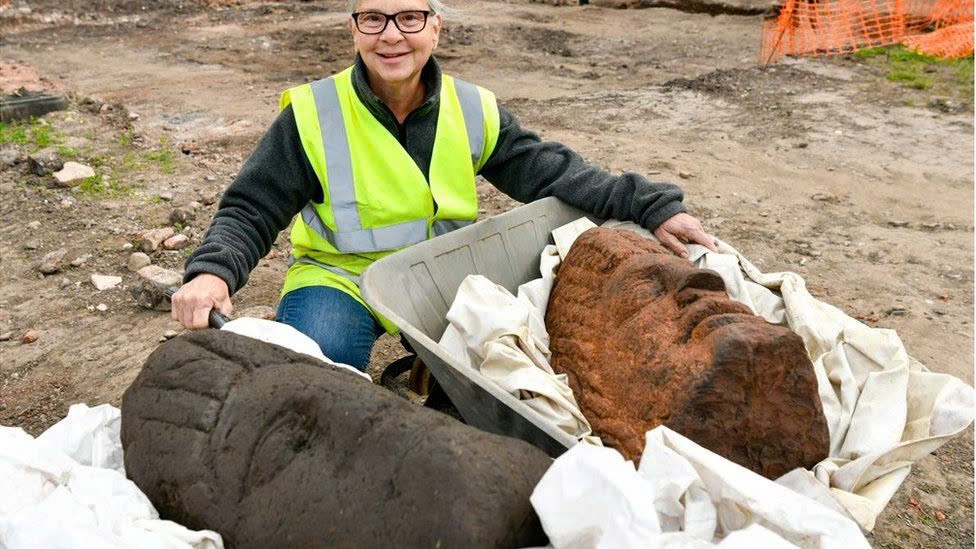
In a thrilling archaeological discovery, two colossal Roman statue heads have been unearthed at a cricket club in Carlisle, northern England. These impressive finds, believed to date back to the early 3rd century, have captivated both experts and history enthusiasts alike.
A Stroke of Fortune on Day Two
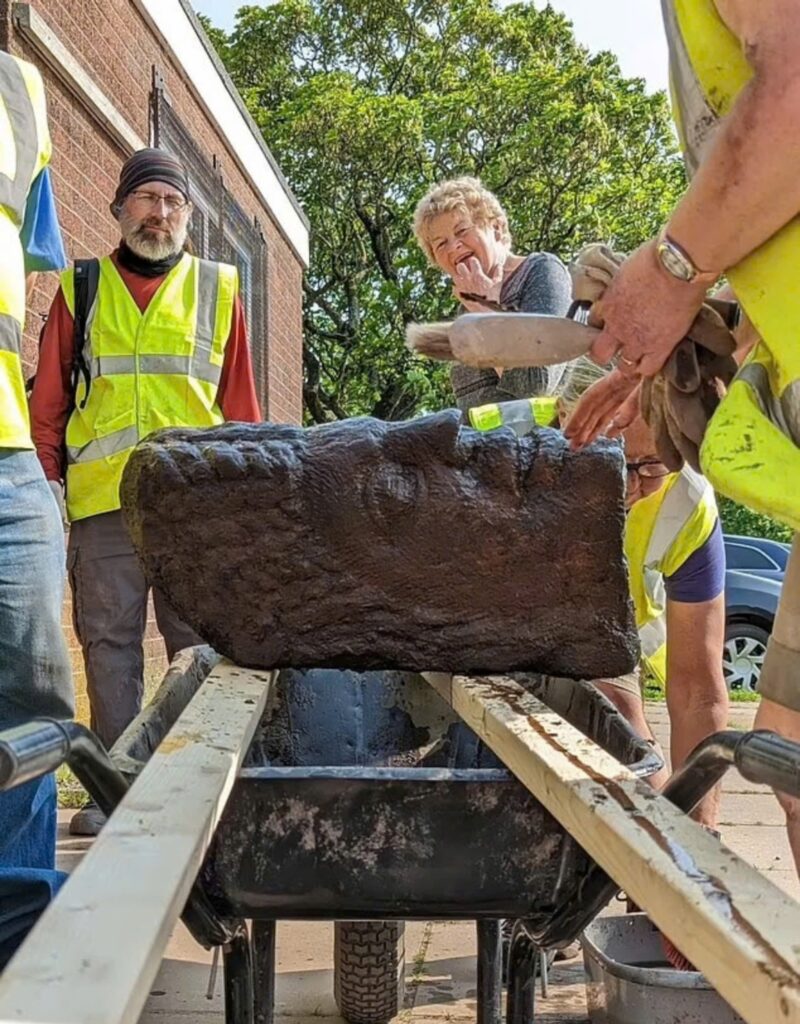
The excavation, which commenced on Monday, May 22, yielded its extraordinary find on just the second day of digging. One of the sculpted heads is thought to potentially represent Fortuna, the Roman goddess of luck – a fitting symbol for such a fortuitous discovery.
Imperial Connections: Septimius Severus and Julia Domna?
Archaeologists speculate that the two heads, one male and one female, might depict the Roman Emperor Septimius Severus and his wife, Julia Domna. The female figure’s distinctive hairstyle, featuring thick, wavy plaits, aligns with Julia Domna’s renowned imperial fashion.
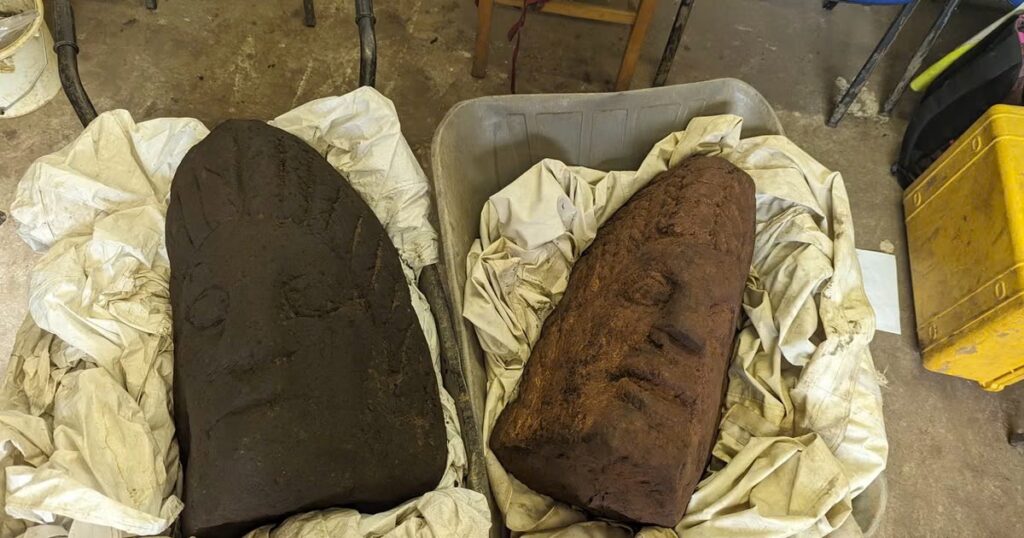
Monumental in Scale and Significance
These sandstone masterpieces stand an impressive two feet tall – three times larger than life-size. Experts estimate that the complete statues would have towered between 12 and 15 feet, based on the proportions of the heads. As the first sculptures discovered at this site, they represent a significant leap forward in understanding Carlisle’s Roman past.
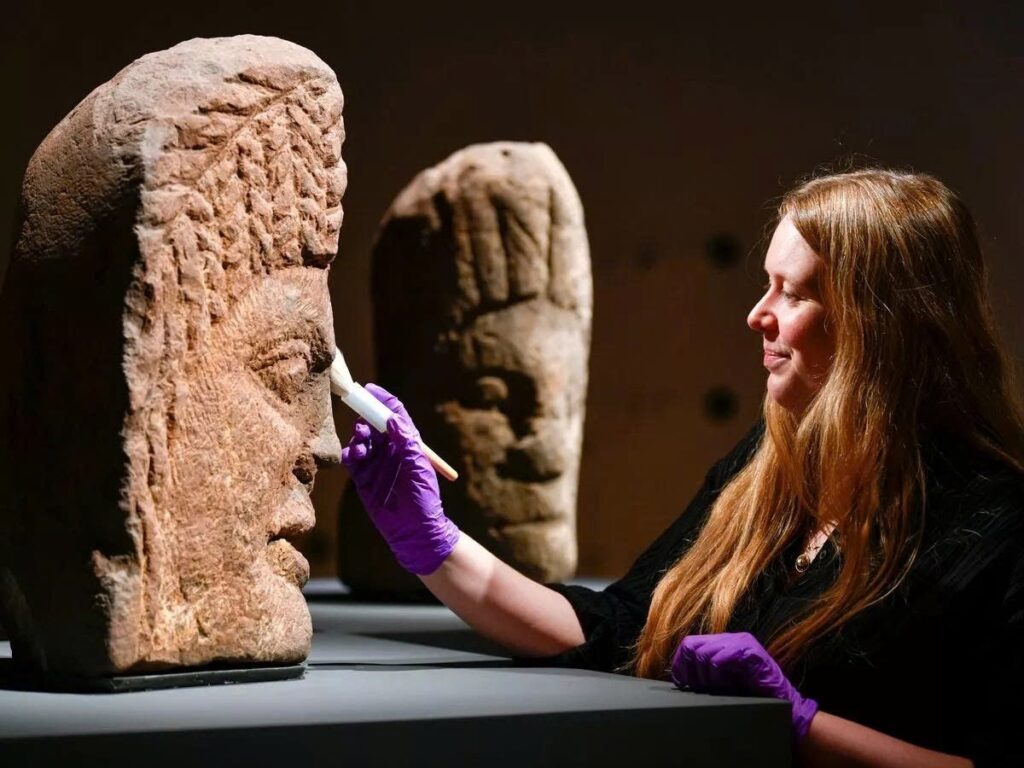
A Growing Trove of Roman Artifacts
The newly found heads join an expanding collection of Roman-era treasures from the site. Previous excavations have yielded tiles and gemstones, hinting at Emperor Septimius Severus’s possible connection to the area.
The Mystery of Their Placement

Intriguingly, the heads were discovered side-by-side at the edge of a cobbled Roman road, appearing to have been deliberately placed there. Archaeologists theorize they may have been rejected “spolia” – repurposed building materials left behind during the looting of a nearby bathhouse complex.
Volunteer Triumph and Local Excitement
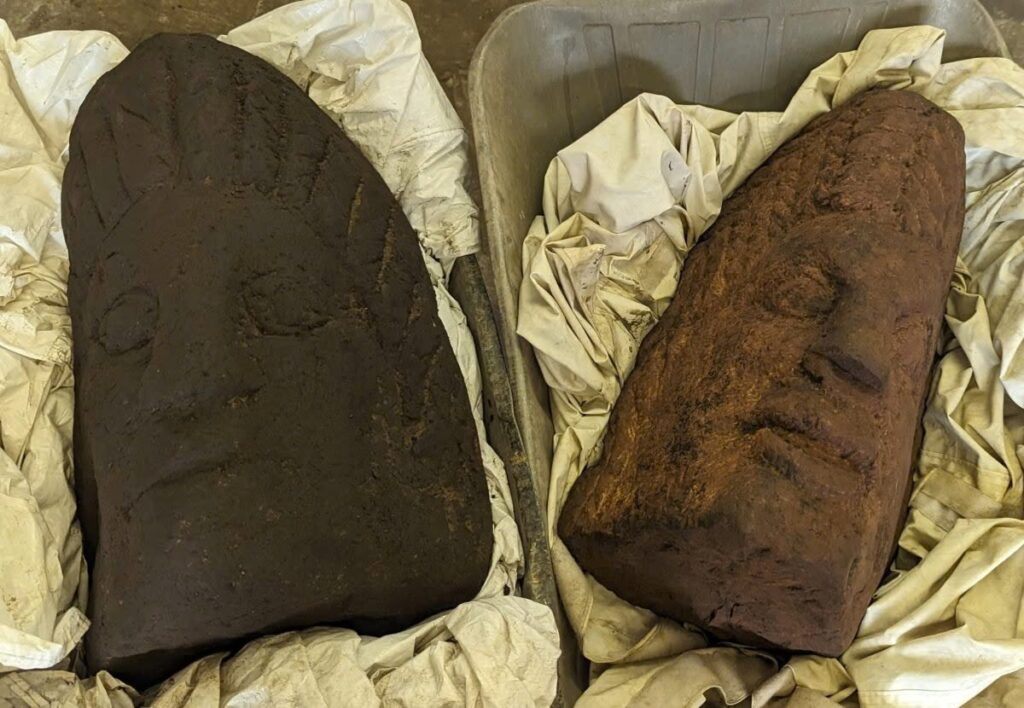
The groundbreaking discovery was made by volunteers Carolyn Veit and Ruth Pearce, highlighting the invaluable contribution of community members to archaeological research. Cumberland Council Councillor Anne Quilter expressed enthusiasm for the find, emphasizing its significance in strengthening Carlisle’s rich Roman heritage.
The Dig Continues: What Secrets Remain?
With the excavation set to continue until June 24, and support from local firm R H Irving Construction expanding the dig site, anticipation builds for what other historical treasures may yet be revealed. As more volunteers join the effort, Carlisle stands poised on the brink of further fascinating discoveries that promise to illuminate its ancient past.
